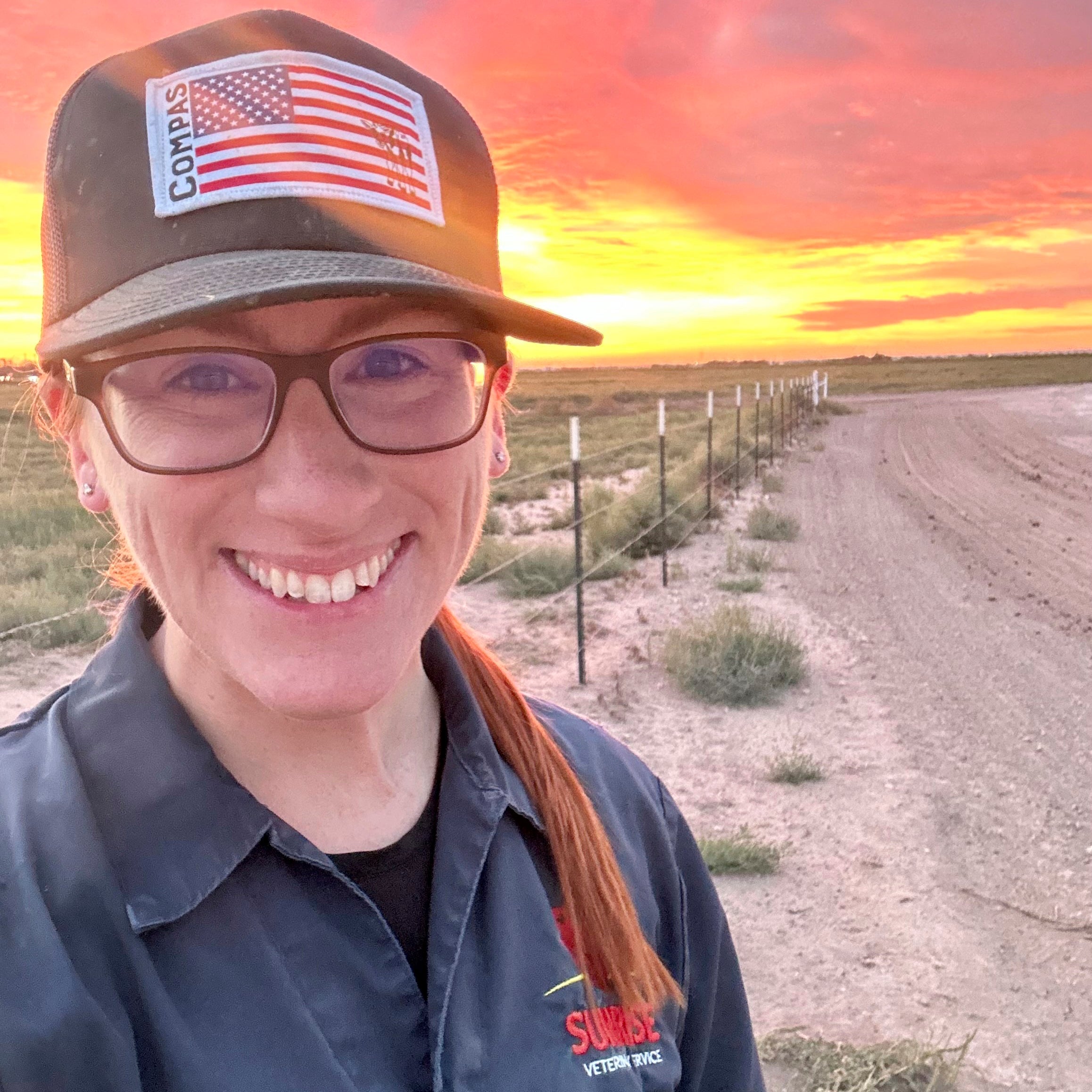This Texas veterinarian helped crack the mystery of bird flu in cows
It was a Texas veterinarian who collected samples from dairy farms that confirmed the outbreak of H5N1 bird flu in cattle for the first time

The first calls that Dr. Barb Petersen received in early March were from dairy owners worried about crows, pigeons and other birds dying on their Texas farms. Then came word that barn cats — half of them on one farm — had died suddenly.
Within days, the Amarillo veterinarian was hearing about sick cows with unusual symptoms: high fevers, reluctance to eat and much less milk. Tests for typical illnesses came back negative.
Petersen, who monitors more than 40,000 cattle on a dozen farms in the Texas Panhandle, collected samples from cats and cows and sent them to Dr. Drew Magstadt, a friend from college who now works at the veterinary diagnostic laboratory at Iowa State University.
The samples tested positive for a bird flu virus never before seen in cattle. It was the first proof that the bird flu, known as Type A H5N1, could infect cows. As of Wednesday, 36 U.S. herds had confirmed infections, according to the U.S. Agriculture Department.
“It was just a surprise,” recalled Petersen. “It was just a little bit of disbelief.”
At the same time, on almost every farm with sick animals, Petersen said she saw sick people, too.
“We were actively checking on humans,” Petersen said. “I had people who never missed work, miss work.”
So far, two people in the U.S. have been confirmed to be infected with H5N1, most recently a Texas dairy worker linked to the cattle outbreak, according to the U.S. Centers for Disease Control and Prevention. About two dozen people have been tested and about 100 people have been monitored since the virus appeared in cows, Dr. Demetre Daskalakis, a CDC respiratory diseases official, told reporters Wednesday.
Daskalakis said CDC has seen no unusual flu trends in areas with infected cows, but some experts wonder if anecdotal reports of sick workers mean more than one person caught the virus from the animals.
Petersen said some workers had symptoms consistent with flu: fever and body aches, stuffy nose or congestion. Some had conjunctivitis, the eye inflammation detected in the Texas dairy worker diagnosed with bird flu.
Dr. Gregory Gray, an infectious disease epidemiologist at the University of Texas Medical Branch in Galveston, has been taking samples from livestock and people on two Texas farms. On farms with confirmed cattle infections, there have also been reports of mild illnesses among the workers, he said.
His research has been difficult. Many workers are reluctant to be tested. That may be because they have limited access to health care or fear divulging private health information.
Without confirmation, no one knows if the sick workers were infected with the bird flu virus or something unrelated, Gray said.
“They seem to be linked in time and space, so one would say it’s biologically plausible,” said Gray.
Some of the workers who fell ill sought treatment and were offered oseltamivir, an antiviral drug sold under the brand name Tamiflu, Petersen said.
Some farm workers who were exposed to infected animals or people were offered the medication, CDC spokesman Jason McDonald said. State health officials are responsible for evaluating and providing treatment, according to federal guidelines.
Health officials in Texas provided Tamiflu to the person known to be infected with H5N1 and family members, plus two people on a second dairy farm who were exposed to infected animals, said Chris Van Deusen, a spokesman for the Texas Department of State Health Services. He said he wasn't sure if others had been offered the antiviral.
Farmers have been hesitant to allow health officials onto their land, said Dr. Kay Russo, a Colorado veterinarian who consulted about the outbreak with Petersen.
“This particular disease is looked at as a scarlet letter,” Russo said. “It has this stigma associated with it right now.”
Russo called for wider testing of cattle, people and milk.
“We do not know what we do not measure,” she said. “Unfortunately, the horse left the barn and took off a lot faster than we were able to mobilize.”
The reluctance of workers and farmers to allow testing is “greatly hampering” understanding of how the virus spreads, how large the outbreak is now and how quickly it may grow, Gray said.
“It’s a negative, very negative, effect,” he said.
Petersen said she understands workers' and farmers' fears. She praised the farmers who had been willing to let her gather the first samples that confirmed the outbreak and reflected on what the results could mean.
“You immediately think about the cows, the people that care for them and the families that have these farms,” she said. “You’re thinking about the big picture, long term. Your mind starts to go down that entire path of concern.”
___
The Associated Press Health and Science Department receives support from the Howard Hughes Medical Institute’s Science and Educational Media Group. The AP is solely responsible for all content.
Bookmark popover
Removed from bookmarks